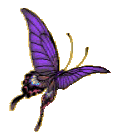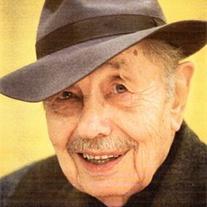


 |
 |  |


Clyde Snow liked to say that bones made good witnesses, never lying, never forgetting, and that a skeleton, no matter how old, could sketch the tale of a human life, revealing how it had been lived, how long it had lasted, what traumas it had endured and especially how it had ended.
He was a legendary detective of forensic anthropology, the esoteric science of extracting the secrets of the dead from skeletal remains. His subjects included President John F. Kennedy, the Nazi war criminal Josef Mengele, the “disappeared” who were exhumed from mass graves in Argentina, victims of the serial killer John Wayne Gacy, and even Tutankhamen, the pharaoh who lived 3,300 years ago.
More, Dr. Snow, who testified against Saddam Hussein and other tyrants, was the father of a modern movement that has used forensic anthropology in human rights drives against genocide, war crimes and massacres in Kosovo, Bosnia, Rwanda, Chile and elsewhere.
He lived in Norman, OK where he died at age 86 on Friday at Norman Regional Hospital. A special thanks goes out to all the staff at the hospital.. His wife, Jerry Whistler Snow, said the cause was cancer and emphysema.
Beginning in the 1960s, long before DNA experts perfected their forensic magic, Dr. Snow exposed ghastly crimes, solved mysteries, brought killers to justice, identified victims of disasters, and helped the commercial aviation industry redesign seat restraints and escape systems by analyzing the ways people died in plane crashes.
Though he was no Indiana Jones, he was known to turn up in jungles, deserts and other exotic places in a rumpled jacket and cowboy boots, a cheerful chain smoker with a Texas drawl. He studied skulls mutilated by bullets and bludgeons.
Unlike forensic pathologists, who usually work on fresh bodies, forensic anthropologists, who number about 100 in America, usually have only bones to study. Using calipers, micrometers and other low-tech instruments to measure, probe and analyze remains, Dr. Snow could determine the sex, race, age and other characteristics of the dead, like left- or right-handedness, and often a full identity.
He used computers when they came along, but his stock instruments were like those of the late 19th century, when the celebrated French forensic expert Alphonse Bertillon developed the first successful system for identifying the dead from body measurements. The Bertillon method, notable in Arthur Conan Doyle’s Sherlock Holmes stories, was widely used until superseded by fingerprint identification, which is useless in skeletal examinations.
As living tissue, bones change through life, growing, breaking, undergoing stress. There are about 206 bones (not counting teeth) in an adult — the number varies as many fuse with age — and each has a story to tell, Dr. Snow often said. Like snowflakes, no two bones are exactly alike, and subtle differences can establish congenital conditions, nutritional habits, a history of disease, signs of brutality and murder.
Dr. Snow could estimate a small child’s age from spaces between cranial plates, which knit with time. He could tell handedness from slight disparities in arm lengths. The size of a femur, the leg bone that is the body’s longest, suggested stature.
In bone textures, Dr. Snow found clues to the heavy or light use of muscles, hinting at occupations and habits. In facial bones, he detected kinships in tracing relatives. Skull measurements often differentiated race and sex, and he could see childbirth in a woman’s pelvis.
Applications were legion. In Argentina in 1984, Dr. Snow and students he had trained excavated a mass grave where military death squads had buried some of the 13,000 to 30,000 civilians who vanished in a seven-year “dirty war” against dissidents. They found 500 skeletons, many with bullet holes in the skulls, fractured arms and fingers, and abundant signs of torture and murder.
As chief witness at a trial of generals and admirals, Dr. Snow identified victims and causes of death, evidence that led to five convictions, galvanized public opinion and brought some comfort to loved ones.
Widely sought after for his services, he would respond to pleas for help by assembling forensic teams of analysts, including dentists, and travel to all parts. In El Salvador, he and a team found the skeletons of 136 victims killed by army squads. In Croatia, he exhumed the remains of 200 hospital patients and staff members executed by troops. And he helped build criminal cases against military and government leaders behind the atrocities. As a consultant to human rights organizations, he also exposed mass murders in Guatemala, Ethiopia and Iraqi Kurdistan.
In 1985 he went to Brazil for the Nazi-hunting Simon Wiesenthal Center and helped identify the remains of the long-sought Mengele, the infamous “Angel of Death” who directed gruesome medical experiments on inmates at Auschwitz and sent 400,000 to the gas chambers. After World War II, Mengele fled to Brazil, assumed a new identity and died in 1979. Dr. Snow used many measurements, including Mengele’s hat size (retrieved from Nazi SS records) to confirm his true identity.
Dr. Snow helped identify many victims of the Oklahoma City bombing in 1995. At the behest of Congress, he confirmed that X-rays taken at Kennedy’s autopsy were indeed those of the assassinated president. With Betty Pat Gatliff, a medical artist, he reconstructed the face of Tutankhamen, whose tomb was discovered in 1922. In Baghdad, in 2006, he testified against Saddam Hussein, who was convicted of crimes against humanity and hanged.
Dr. Snow had a doctorate in anthropology, but his forensic anthropology skills were self-taught, a result of decades of experience extracting the secrets of bones. He taught at the University of Oklahoma and lectured to law-enforcement and forensic groups. He served as a consultant to the Oklahoma and Cook County (Chicago) Medical Examiner’s offices.
Dr. Snow was not always successful in his bone hunting. He once traveled to a remote mining village in Bolivia in a futile search for the remains of Butch Cassidy and the Sundance Kid, the notorious turn-of-the-century outlaws celebrated in the 1969 movie starring Paul Newman and Robert Redford. But, with a forensic pathologist and a dentist in 1980, he determined that a skull sent from Germany was not Hitler’s.
“Bones can be puzzles,” he told The New York Times in 1991, “but they never lie, and they don’t smell bad.”
Clyde Collins Snow was born in Fort Worth on Jan. 7, 1928, the only child of Wister Clyde and Sarah Isobel Collins Snow. He grew up in Ralls, Texas, a panhandle town. His father was a physician, and his mother, though not a trained nurse, assisted in their home clinic and maternity ward. The boy accompanied his father on house calls and trips to accident scenes and morgues.
When he was 12, he saw his first pile of bones on a hunting trip with his father, who recognized the mingled skeletons of a man and a deer. The older Snow hypothesized that the man shot the deer and died of a heart attack dragging it away. A set of keys in the remains was the only clue. But a deputy sheriff recalled the disappearance of a local hunter and the keys opened doors at the man’s home, establishing his identity.
An indifferent student, Dr. Snow was expelled from high school over a firecracker prank. Packed off to the New Mexico Military Institute in Roswell, he graduated after four years but soon flunked out of Southern Methodist University. He attended other schools before settling down at Eastern New Mexico University, where he earned a bachelor’s degree in 1951.
He flirted with medical studies at Baylor, but quit and earned a master’s degree in zoology at Texas Tech in 1955. After three years in the Air Force, he studied archaeology at the University of Arizona, learning excavation techniques that proved invaluable. (He later switched to anthropology for his doctorate in 1967.)
He also worked in the 1960s for an agency of the Federal Aviation Administration, studying ways to make airplanes safer in a crash. He discovered that many passengers died of smoke inhalation, not impact injuries, and that those seated near exits had the lowest fatality rates — facts used in the redesign of seat restraints and exit strategies.
Dr. Snow married Jerry Whistler in 1970. Besides his wife, he is survived by four daughters with his former wife Donna Herring: Jennifer Boles and her husband Chris, Tracey Murphy, Cynthia Wood and her husband David, and Melinda McCarthy; and from his former wife Loudell Fromme, a son, Kevin Snow and his wife Gwen; eight grandchildren, Quentin Franklin, Michael Franklin, Austin McCarthy, Megan Murphy, Isobel Boles, Matthew Snow, David Snow and Alexander Snow; and eight great-grandchildren.
In 1979, Dr. Snow helped identify many of the 33 boys and young men killed by Mr. Gacy, most of them buried in a crawl space under his suburban Chicago home. That year he also helped identify many of the 273 people killed when an American Airlines flight crashed and burned on takeoff from O’Hare Airport in Chicago, then the nation’s worst air disaster.
His career was a thread running through Christopher Joyce and Eric Stover’s book “Witnesses From the Grave: The Stories Bones Tell” (1991), a study of forensic anthropology. For decades Dr. Snow taught his skills to thousands of students, especially in nations where war crimes and human rights abuses were fast receding into the mists of history.
“Witnesses may forget throughout the years, but the dead, those skeletons, they don’t forget,” he told The Times in 2002. “Their testimony is silent, but it is also very eloquent.”
Memorials may to made to the Clyde Snow Social Justice Award, c/o The OU Foundation, 100 Timberdell Rd., Norman, OK 73019 - ph. 866-321-1174
This site may be freely linked, but not duplicated in any way without consent.
All rights reserved! Commercial use of material within this site is prohibited!
© 2000-2024 Oklahoma CemeteriesThe information on this site is provided free for the purpose of researching your genealogy. This material may be freely used by non-commercial entities, for your own research, as long as this message remains on all copied material. The information contained in this site may not be copied to any other site without written "snail-mail" permission. If you wish to have a copy of a donor's material, you must have their permission. All information found on these pages is under copyright of Oklahoma Cemeteries. This is to protect any and all information donated. The original submitter or source of the information will retain their copyright. Unless otherwise stated, any donated material is given to Oklahoma Cemeteries to make it available online. This material will always be available at no cost, it will always remain free to the researcher.